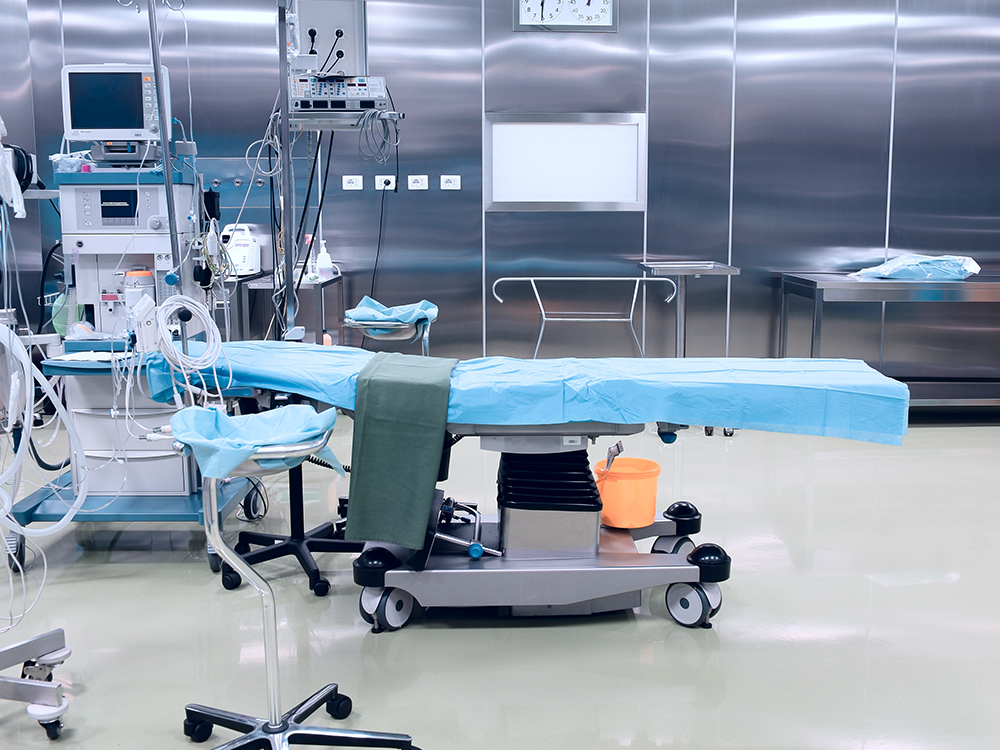Operating room equipment :-

The anesthesia machine is at the head of the operating table. This machine has tubes that connect to the patient to assist them in breathing during surgery, and built-in monitors that help control the mixture of gases in the breathing circuit.- The anesthesia cart is next to the anesthesia machine. It contains the medications, equipment, and other supplies that the anesthesiologist may need.
- Sterile instruments to be used during surgery are arranged on a stainless steel table.
- An electronic monitor (which records the heart rate and respiratory rate by adhesive patches that are placed on the patient's chest).
- The pulse oximeter machine attaches to the patient's finger with an elastic band aid. It measures the amount of oxygen contained in the blood.
Evaluate the Current Operating Room
Before officially embarking on the facility planning process, it’s necessary to take stock of how existing operating room space is utilized. Are there any navigation or bottlenecking issues in the current operating room? During this process, identify and consult with staff members to collect their feedback. This not only includes the surgery team, but also those in radiology, administration, laboratory, and beyond.
Set Goals for the New Project
What will be the focus of the new operating room? Does the facility plan to integrate or expand its imaging capabilities? Will the new space require more room for specialized procedures, which can require a larger surgical staff? To begin the planning and design phases, several factors must be taken into account. These can easily be broken down into the room’s size, orientation and layout, and supporting systems. Further designs for accompanying spaces are also key.
Room Size
In its 2014 Operating Room Requirements Guidelines, the Facility Guidelines Institute recommends that the minimum inpatient operating room size be no less than 400 square feet. Operating spaces designed for specialized procedures generally require more staff, and are recommended to be at least 600 square feet.

No comments:
Post a Comment